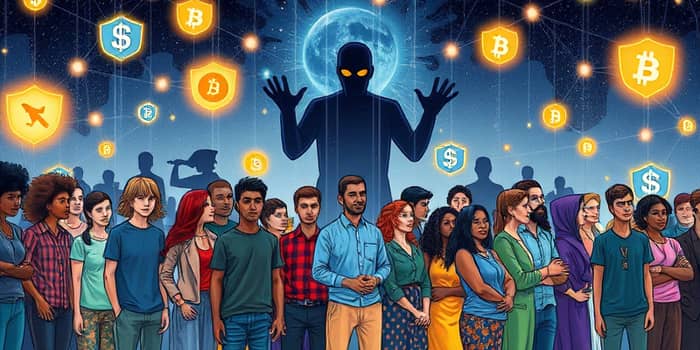
In today’s interconnected world, financial fraud has reached unprecedented levels. As bad actors refine their methods, individuals must arm themselves with knowledge and practical tools. This article explores the scale of scams, emerging threats, and how global financial literacy can serve as your strongest defense.
Scams have grown into a global crisis. In recent years, over $1 trillion has vanished into fraudsters’ pockets, yet fewer than 4% of victims recover their money. The United States alone reported staggering losses in 2024.
Americans lost $12.5 billion to fraud, marking a 25% spike from the previous year. While reports of fraud remained around 2.6 million, the share of those suffering monetary losses climbed from 27% to 38%.
Payment methods such as bank transfers and cryptocurrency accounted for the highest share of losses. The financial toll is rising, and the human cost—stress, broken trust, ruined credit—cannot be overstated.
Fraudsters continually innovate. Today, AI-driven scams harness deepfakes and voice cloning to mimic trusted voices, making phishing campaigns nearly indistinguishable from legitimate communications.
“Scam farms”—industrial-scale operations in parts of Southeast Asia—exploit trafficked labor to orchestrate thousands of daily calls and messages. Criminal rings refine scripts and rotate scripts in real time to bypass spam filters.
Common and emerging methods include imposters posing as government agents or tech support, job and investment ploys promising quick returns, and synthetic identities built from stolen data. Email and SMS phishing remain ubiquitous, but AI-enhanced attacks are on the rise.
No one is immune, but certain groups face higher risk. Seniors, often less familiar with digital tools, receive calls claiming to be IRS agents or bank officials. Tailored workshops like Savvy Saving Seniors® now teach spot checks, quizzes, and scenario practice to build situational awareness.
Job seekers desperate for income are courted by fake recruiters. They may be asked to pay for background checks or divulge bank details for “processing.” Once data is in criminal hands, identity theft follows swiftly.
Proactive measures can significantly reduce your risk. Cultivating healthy skepticism and following clear protocols will keep your finances safe.
For job seekers, conduct in-depth company research. Scrutinize job posts for inconsistencies, confirm email domains end in official URLs, and trust your instincts—if it feels off, step away.
Seniors should enroll in community workshops and use checklists tailored to common scams. Incorporate examples of AI-based attacks into training materials to stay ahead of fraudsters.
There is a direct link between literacy and protection. Adults who understand banking, investing, and digital security adopt safe online habits and question suspicious offers.
Key skills include evaluating investment opportunities critically, recognizing legitimate communications from banks or government, and avoiding public Wi-Fi for transactions. Education initiatives must evolve alongside scams, integrating real-world examples and digital simulations.
Interactive training—simulations, workshops, community programs—builds confidence. Victims who report fraud within 24 hours have a 64% chance of recovering funds, highlighting the power of preparedness and swift action.
Financial institutions and consumer protection agencies are ramping up efforts. Regular fraud bulletins inform customers about trending scams, while clear action steps guide victims through reporting and recovery.
Consumer action steps include:
Partnerships between banks, law enforcement, and community groups amplify reach. Public service announcements, social media alerts, and local workshops turn awareness into action.
As technology advances, so do the threats. In 2025, 93% of financial institutions reported concerns over AI-driven fraud. Deep learning algorithms can tailor attacks to individual profiles, making detection challenging.
Organized crime syndicates will leverage cross-border networks and new tech to scale operations. Yet defenders, armed with rapid response frameworks and real-time data sharing, can counter these threats.
Staying informed and connected is vital. By embracing financial education, practicing vigilance, and leveraging institutional resources, we can transform the scam battleground into a landscape where knowledge and community protect us all.
Take action today: Share these insights with friends and family, attend a workshop, and commit to ongoing learning. In the fight against fraud, education is our greatest ally.
References













